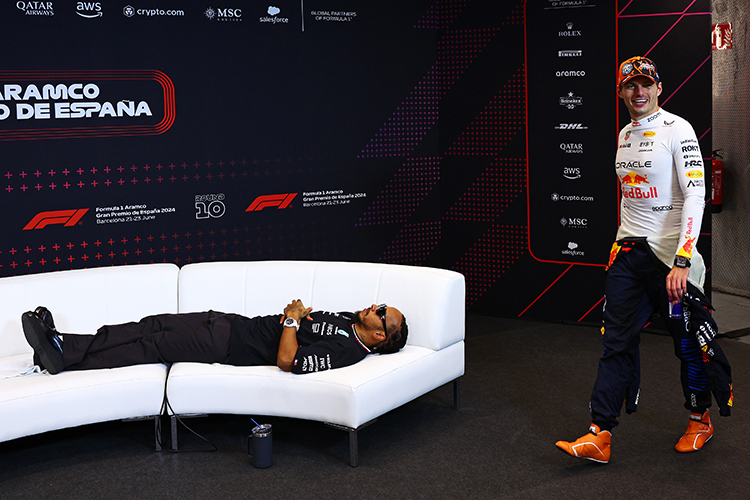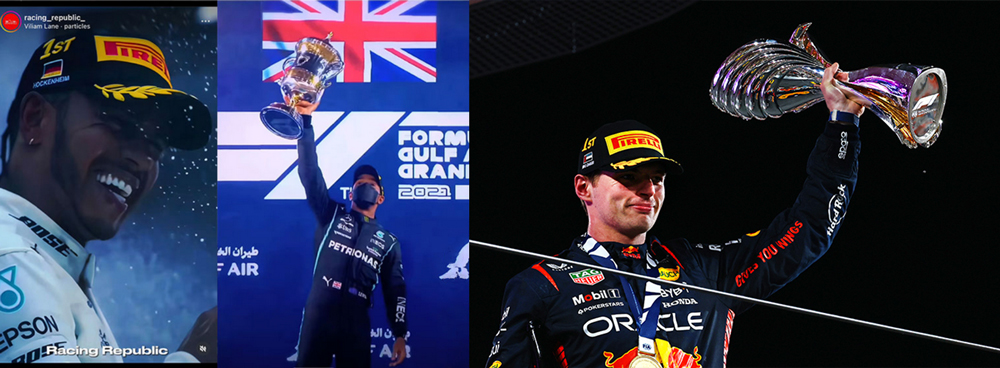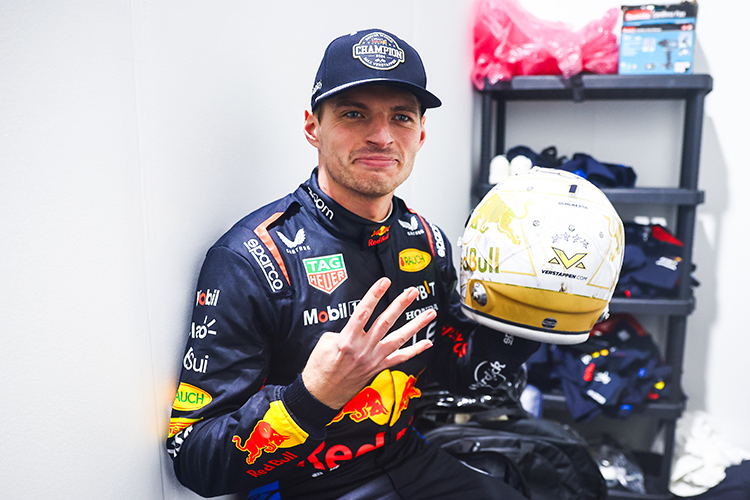Parc Fermé Explained: What It Is and How the FIA Enforces It
Parc Fermé in F1 explained: what it is, when it applies, allowed changes, penalties, and how the FIA enforces rules on race and sprint weekends. Key examples.
Parc Fermé—French for “closed park”—is a designated, highly regulated area used in Formula 1 and other motorsports where cars are placed under strict official supervision to ensure full compliance with technical regulations. Central to maintaining a level playing field, it prevents teams from making unauthorized setup changes or gaining unfair advantages, ensuring the car’s configuration remains consistent from qualifying to the race.
In F1, parc fermé typically applies from the moment a car leaves the pit lane for qualifying until after post-race inspection. The FIA enforces these rules through assigned technical personnel, overhead cameras, night-shift security, tamper-proof seals, and a detailed list of permitted maintenance activities. Any work outside these guidelines requires explicit FIA permission, reinforcing fairness and transparency in how the competition is run.
If qualifying is the moment drivers let it all out, parc fermé is the moment the FIA locks it all down. From setup freezes to surprise spot-checks, this is the sport’s way of making sure the car you raced to the front is the car you actually start with. Here’s what it is, why it exists, when it applies, and what teams can (and can’t) touch.
What is Parc Fermé?
- The short version: “Parc fermé” is French for “closed park.” In Formula 1, it’s both a physical area and a legal status. When a car is under parc fermé, its configuration is effectively frozen. Teams can only perform a tightly defined list of checks and repairs, under FIA supervision.
- The point: Competitive fairness, cost control, and legality. It prevents teams from unleashing one ultra-trick qualifying car and then rebuilding a different machine for the race, and it gives FIA scrutineers a stable reference to verify compliance with the technical regulations.
Why Fans Should Care
- Strategy: Teams must balance qualifying speed with race-day durability because they can’t completely rework the car overnight.
- Drama: Fail a post-session check, and a podium can vanish. Need repairs? You might be forced to start from the pit lane.
- Sprint weekends: Parc fermé timing changes the risk/reward calculus twice in one event.
When Parc Fermé Applies
- Standard race weekends:
- Starts: At the beginning of Q1.
- Ends: When the race starts (grid procedures are controlled but allow some limited work). After the race, cars return to parc fermé for scrutineering until they’re released.
- Sprint weekends (current format):
- Parc fermé Window 1: From the start of Sprint Qualifying (Friday) through the Sprint (Saturday).
- Then it opens: Teams can reconfigure cars between the Sprint and Grand Prix Qualifying.
- Parc fermé Window 2: From the start of Grand Prix Qualifying (Saturday) until the race start.
- Post-race: As usual, cars are impounded for checks.
Where Is It?
You’ll often see cars parked in a fenced or cordoned area after sessions—sometimes outdoors by the podium, sometimes in a controlled garage space. The FIA can also declare cars to be “under parc fermé conditions” even when they’re moved, so long as every action is supervised.
What Teams Are Allowed to Do Under Parc Fermé
Examples only; the exact permitted list is defined in the FIA Sporting Regulations and event notes:
- Standard checks and safety work: Visual inspections, tightening fasteners, topping up fluids, connecting to the standard ECU to download data and run diagnostics.
- Tyres and pressures: Fit and change tyres (within allocation rules), adjust pressures to the FIA’s limits.
- Front wing angle: Adjust via the normal, built-in mechanism.
- Like-for-like repairs: Replace damaged parts with identical-specification components, but only with FIA approval and a damage declaration.
- Cooling and brake management: Fit/remove pre-declared cooling blanking or brake duct “inserts” permitted by the event notes (particularly for hot or wet conditions), as allowed by the race director/FIA.
- Grid procedures: Warm-up, bleeding brakes, starting systems, removing cooling blankets, setting clutch bite point, minor electronic setting changes.
What Teams Are Not Allowed to Do
- No setup changes: Ride height, camber/toe, springs, dampers, heave elements, anti-roll bars—frozen.
- No swapping major aero: No changing front or rear wing assemblies, floors, diffusers, or bodywork beyond permitted pre-declared options.
- No spec upgrades: You can’t fit a different-spec part and call it a repair. If the replacement isn’t identical in spec, you’re into pit-lane-start territory.
- No geometry or structural changes: Suspension pickup points, steering arms, or gearbox casing changes are off-limits.
- No sneaky weight moves: Ballast and weight distribution must remain as-run.
Repairs, Exceptions, and Weird Weather
- Damage from incidents: Teams can repair with identical parts after submitting a damage report to the FIA. Scrutineers often seal components and supervise the work.
- Force majeure/safety: If something is unsafe, the FIA can authorize limited work. Expect scrutiny and documentation.
- Change of climatic conditions: If the race director declares a significant change (e.g., a wet race after a dry qualifying), teams may be allowed to fit pre-approved wet-weather cooling/duct options. Beyond that, substantial changes usually mean a pit-lane start.
How the FIA Enforces Parc Fermé
- Physical control: Fenced-off areas, parc fermé stickers, seals on components, and a scrutineer presence any time the car is touched.
- Weighbridge and legality checks: Cars are randomly or routinely called to the scales during qualifying; ignore a call and you’re in big trouble. Post-session, detailed inspections can include:
- Plank wear and ride height
- Wing slot gaps and flexibility
- Brake duct geometry
- Fuel samples and minimum fuel requirements
- Power unit and software conformity (via the standard ECU logs)
- Targeted inspections: The FIA can focus on parts suspected of pushing the limits, or widen the sample after a red flag, curb strike heavy race, or bumpy circuit.
- Post-race impound: Expect even deeper dives on several cars, plus randoms.
Penalties for Parc Fermé Breaches
- Pit-lane start: The usual outcome if you make non-permitted changes or fit a different-spec part. The car must be re-scrutineered before the race.
- Exclusion (disqualification): If the car fails a legality check (e.g., floor/plank wear, illegal wing), the driver can be excluded from that session’s classification or the race results.
- Grid penalties: Separate from parc fermé, but often intertwined if teams use the opportunity to change power unit or gearbox elements out of allocation while accepting a pit-lane start.
- Fines and reprimands: For procedural missteps that don’t affect performance.
Famous Parc Fermé Moments
- 2021 São Paulo: Lewis Hamilton was excluded from qualifying for a rear wing DRS slot-gap infringement discovered under parc fermé, starting from the back for the Sprint and staging a historic recovery.
- 2023 United States GP: Lewis Hamilton and Charles Leclerc were disqualified post-race for excessive plank wear—picked up in post-race parc fermé checks after a bumpy, high-degradation event.
Strategy: The Parc Fermé Tightrope
- Setup compromise: Teams must choose ride heights and stiffness that can survive race stints and kerbs, not just deliver one-lap glory.
- Sprint calculus: With two parc fermé windows, teams can pivot between the Sprint and Grand Prix. A poor Sprint can prompt a setup rethink before qualifying.
- The “intentional pit-lane start”: If Saturday night forecasts swing wildly, a team may break parc fermé on purpose, take a pit-lane start, and tailor the car for the new conditions. On some tracks, the upside can outweigh the loss of grid position.
What Parc Fermé Is and Its Purpose
- French for "closed park": The term originates from the French Grand Prix.
- Level playing field: The core goal is to ensure that the cars remain in the same condition after qualifying as they were when they entered the controlled period, promoting fairness.
- Supervised area: It's a designated, secure location at the circuit where team equipment and cars are held.
When It Begins and Ends
- Start: Parc fermé conditions begin when a car crosses the pit lane exit line for the first time during Qualifying 1 (Q1).
- End: The conditions last until the start of the race's formation lap.
What Teams Can and Cannot Do
- What's restricted: Teams are severely restricted from changing car parts or suspension settings.
- What's allowed: Limited maintenance, such as repairing accident damage, is permissible with FIA supervision. Other permitted actions might include adding fuel or adjusting brakes.
- Significant changes: Modifications to critical elements like weight distribution, ballast, or aerodynamic performance are prohibited without strict FIA permission.
Enforcement
- Scrutineers: An FIA scrutineer remains with the car to ensure no unauthorized modifications occur.
- Penalties: If a team breaches the parc fermé regulations, the driver typically must start the race from the pit lane.
The Purpose of Parc Fermé
- Fairness: Parc Fermé creates a level playing field by preventing teams from making significant setup changes after qualifying to gain an unfair advantage in the race.
- Safety: It helps ensure that cars are in the same safe, legal condition at the start of the race as they were at the end of qualifying.
When Parc Fermé Begins and Ends
- Start: Parc Fermé conditions begin when the cars leave the pit lane for the first time during the qualifying session on Saturday.
- End: These conditions remain in effect until the start of the race, although the cars are covered and sealed for overnight protection after a short window for permitted work is completed.
What Is and Isn't Allowed
- Allowed: Teams can perform pre-approved maintenance, such as draining engine oil, adding driver drinking fluid, and adjusting the front wing's angle. Damaged parts can be repaired, and bodywork can be cleaned.
- Not Allowed: Teams cannot make major changes to the car's setup, such as altering suspension, adding new parts, or replacing components.
- Monitoring: Assigned FIA scrutineers supervise the cars to ensure compliance with the rules.
Consequences of Violating Parc Fermé Rules
- If a team makes an unauthorized major change, the driver must start the race from the pit lane.
- Exceeding the limits for engine and gearbox components also results in grid penalties.
Quick FAQ
- When does parc fermé start? At the start of qualifying (and separately at Sprint Qualifying on Sprint weekends).
- Can teams change tyres under parc fermé? Yes, within allocation rules and under FIA supervision.
- Can they adjust front wing angle? Yes, using the standard adjuster. Swapping to a different wing assembly is not allowed.
- What if a car crashes in qualifying? Repairs with identical parts are usually allowed with FIA approval; major changes mean a pit-lane start.
- Why do cars sit in a fenced area after the race? That’s post-race parc fermé so the FIA can verify legality before releasing final results.
The Bottom Line
Parc fermé is F1’s integrity lock: the mechanism that keeps qualifying heroes honest and race-day machines legal. It forces tough choices, fuels strategic gambles, and, every so often, flips a result on its head—long after the chequered flag falls.
Up Next



